When Haf Weighton began working on a commission for a local hospital, little did she know she, herself, would end up hospitalized with an illness that would stump medical teams.
And ironically, Haf would also find herself using one of the key elements of that commission…a single word…to not only create a magical work, but to also learn the power of stitching when faced with a physical challenge.
Haf’s piece ‘Salve’ is a testament to medical teams and the patients they served in a historical hospital setting in the UK. Using a unique approach of a pieced concertina, Haf created layers of texture and stitch to celebrate the hospital’s architecture and the meanings its buildings hold for so many.
We’re grateful to Haf for providing this insider’s look into her process, as well as her candid sharing of her own illness journey. It’s a story of how the arts can create beauty, as well as help with healing.
Haf is a Welsh-speaking artist based in the Welsh seaside town of Penarth. She has a degree in Textiles and Fashion from Liverpool John Moores University. Her work has been exhibited across the globe. Haf also hosts workshops for all ages, and she has run several successful school projects funded by the Arts Council of Wales.
Name of piece: Rookwood – 100 years of healing
Year of piece: 2018
Techniques and materials used: 120 x 50 cm’s, Print, paint, stitch, Repurposed upholstery fabric, acrylic paint, threads (gutterman)
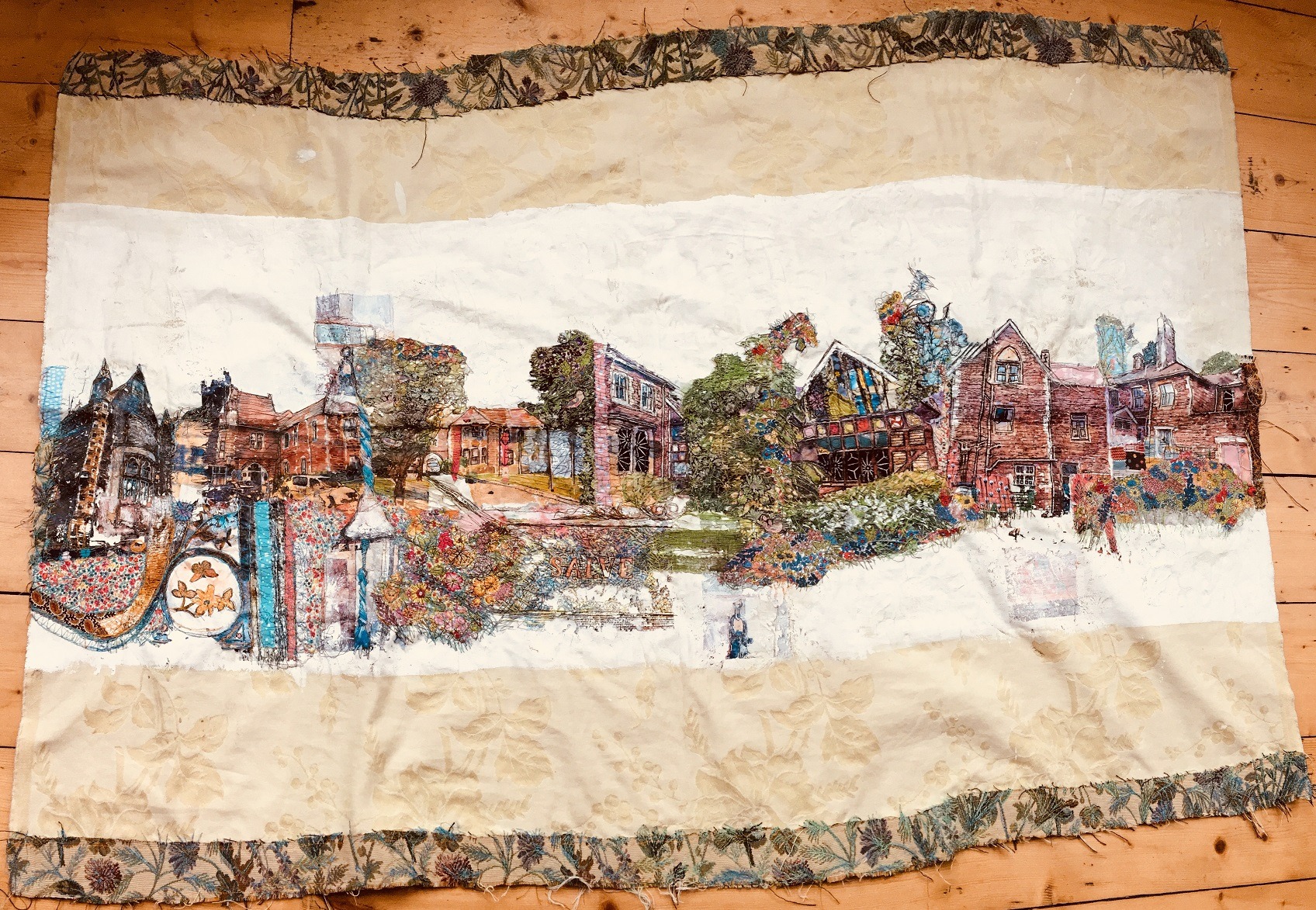
The healing power of art
TextileArtist.org: How did the idea for the piece come about? What was your inspiration?
Haf Weighton: I created this piece in response to a 2018 commission from the Rookwood Hospital in Cardiff, UK. It is a local hospital for people recovering from spinal injuries, stroke, MS and neurological disorders.
The brief requested a piece that celebrated the character of the building, its purpose and what it meant to staff and patients. The piece was to also celebrate the Centenary of the hospital.
There is a tiled mosaic at the building’s entrance made up of many hundreds of small fragments and the word ‘Salve’ embedded in the middle. I decided to use that as my starting point.
When I first stepped on the mosaic, I was intrigued by the word ‘salve’ and later researched its meaning. I found it roughly translates as ‘heal’ in most languages, and this made me consider what that word would mean to patients and medical staff.
The hospital was originally built as a manor house in 1866, and it became a convalescent home in 1918. It became a general hospital in 1932.
The detailed paintwork in the main entrance of the hospital has remained untouched since originally installed and still looks in great condition today.
Originally, the hospital had planned for my piece to go in another wing at the hospital. But when they realised how closely my piece related to the colour scheme in the reception area, they decided to place it at the foot of the hospital’s main stairs.
I worked on the piece for several months in 2017 and 2018. But ironically, whilst creating, I caught a rare type of pneumonia that challenged the medical profession to find a way to help me heal: salve.
I spent a month in a hospital run by the same trust that runs Rookwood. I was given 20 different types of antibiotics, but my body failed to respond to the medications and my health continued to worsen.
I actually had three versions of the Rookwood piece going, as I often work on several pieces at once. My main piece ended up being exhibited at the hospital, but I continued to work on one of the other pieces while I was ill—mainly using hand stitch because I worked on it from my hospital bed.
Through creating that piece, I learned the true meaning of what it was to try and heal—to salve—from illness.
I left the hospital still very weak and spent over a year getting over my pneumonia. Stitching kept me strong through it all.
I learnt that healing isn’t just about accepting medication from a doctor. It is also about finding ways to look after and be kind to yourself. So, for me, salve is about stitching. I literally used this commission to stitch my health back together.
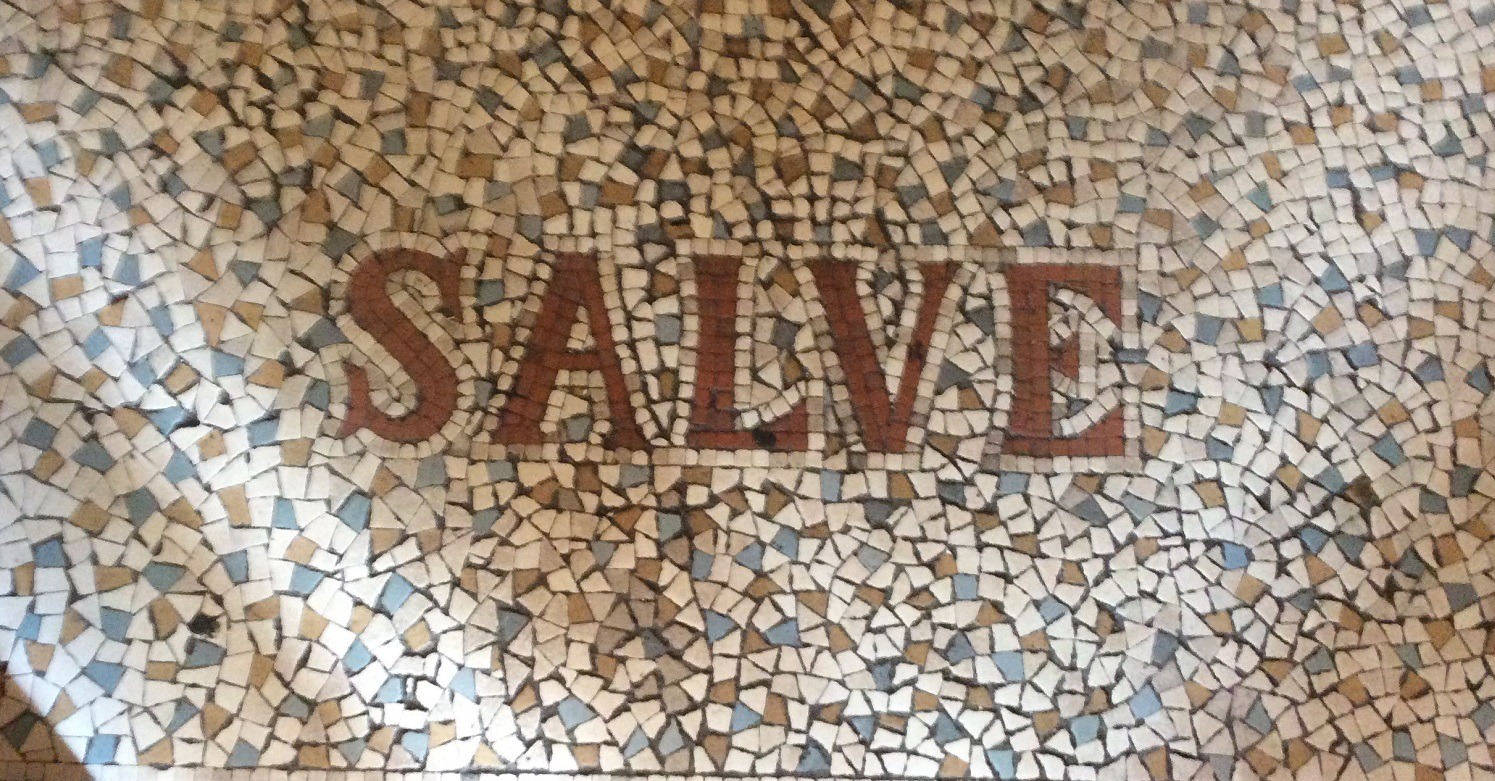
What research did you do before you started to make?
I met with staff and patients at the hospital, and they were all very forthcoming.
I learnt how powerful the building was to the staff. There is some discussion about moving the hospital to a new site, and that possibility seemed to make some staff and volunteers quite emotional, especially when they finally viewed my work.
I love talking about buildings, houses, and architecture, as well as the meanings people invest in those things. I have created many building portraits for both private and community buildings, and I am honoured my work can be so powerful. I am genuinely interested in people and their stories, and I think buildings have the power to offer vehicles for people to relay their stories.
I was also told the bell in the reception was a very significant part of the hospital’s character. It is a large, meter-long brass naval bell like you might see on a ship or at a port. There is also a blue and white chain connected to the bell. It came from a seaman’s guild in Porthcawl—a resurgent seaside town near Cardiff.
The bell used to chime to indicate meal times, but it is now used to indicate the start and end of visiting hours.
I stitched the bell into the composition because staff told me ‘anyone who has worked at Rookwood knows that bell.’
I have my own associations with the sea, so I was naturally drawn to the blue and white rope and the story behind this bell.
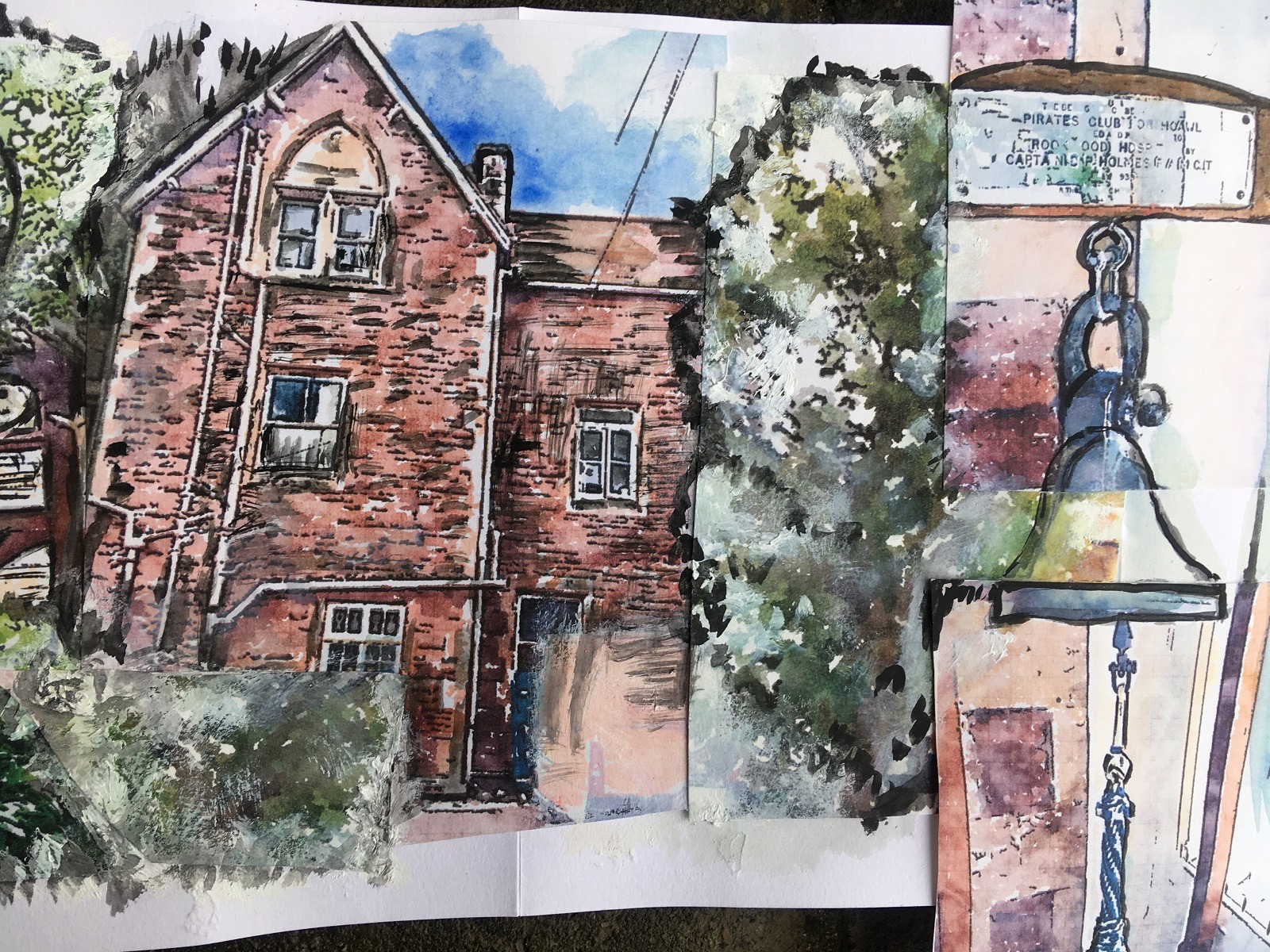
Bringing the past forward
Was there any other preparatory work?
The colours used in the mosaic are very similar to the colours in my final piece. These colours are also reflected all around the main entrance in the hospital, which I understand is the original, untouched colour scheme of the hospital.
The colours I was drawn to in this piece are quite dark to reflect the English gothic style of the original manor house.
The hospital is also surrounded by extensive gardens (26 acres), and in some places, the gardens have been left to grow wild around the outhouses and surrounding hospital buildings. I stitched layers of thread in and around the hospital buildings to try and give an impression of the organic nature of the growing foliage around the hospital.
In some ways, this also represented the idea of growth and healing that I was trying to convey in this piece.
You can definitely tell it’s the same building, but it isn’t a direct copy of the building itself.
I instead drew different aspects of the building and surrounding area, and then I combined those different sketches into a long concertina sketchbook.
The mosaic floor was made up of small blocks of colour combined into one final piece, so I brought the sketches together to create a new single version of the building that anyone who knows the hospital would recognize.

What materials were used in the creation of the piece? How did you select them? Where did you source them?
I looked for materials in my collection that had the same colours and texture as the ‘Salve’ mosaic.
The background material is recycled cotton sheets. I like to use recycled fabrics, particularly old sheets and pillow case. I like the soft nature of recycled sheets and particularly like hand stitching on it.
For this piece, I felt using old sheets was particularly significant for a hospital where people go to recover and spend long days, weeks, months or even years in their beds.
There is no background foundation. I work directly on painted fabric. I did add some tapestry swatches to frame the bottom and top of the piece, and I stitched into those to bring them further to life and to link them with the details in the hospital buildings.
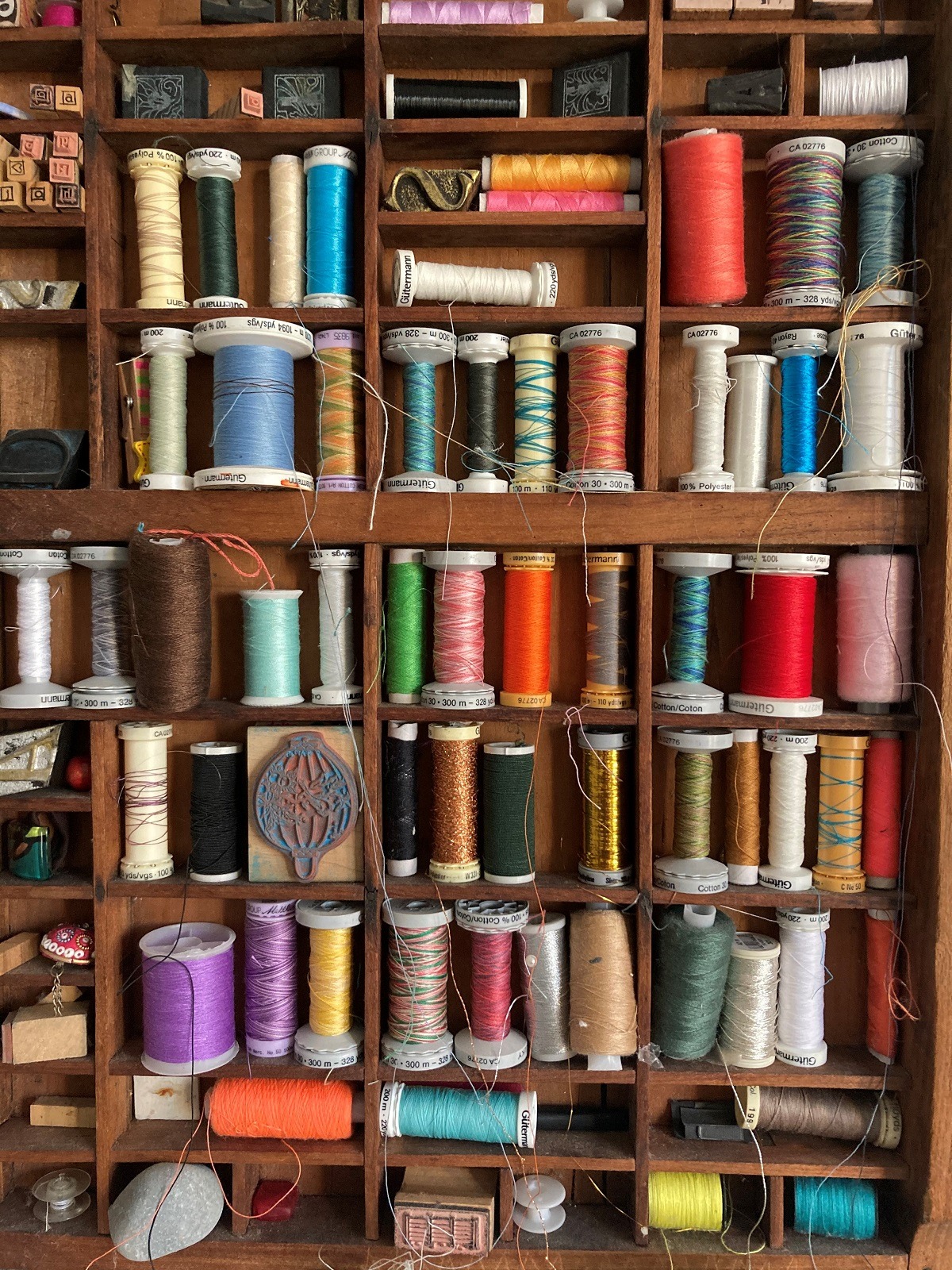
What equipment did you use in the creation of the piece and how was it used?
I used an old fashioned 1930’s Singer sewing machine to stitch my piece.
I used a similar type of machine to this during a workshop I ran for people over 50 at The National Museum of Wales. One of the workshop participants brought in her Grandmother’s old machine, and straightaway, I was hooked.
I found my machine on a free site on Facebook and got it working.
I have several machines, and this is one I like to use occasionally. It is quite slow, and sometimes that slow stitching movement suits the work I am doing.
In terms of threads, I’m often given old threads and sewing boxes from people who have passed. It makes me feel I have a connection with the past by reusing someone’s trusted sewing kit.
I never knew my own grandmother, as she died before I was born. But I do have her sewing box, and I regularly use her pinking shears. (For one exhibition, I invited Sophie Howe, the Future Generations Commissioner for Wales to open the exhibition with my Grandmother’s pinking shears!)

Architectural stitching
Take us through the creation of the piece stage by stage
After drawing my composition, I created a painted ground on the fabric surface using acrylic paints.
I then transferred printed images from my sketchbook onto the painted surface.
I spent a couple days each month building grounds for stitching. I dragged paint across the surface using a silk screen squeegy, and I like the randomness of the colours I created. After all, there is nothing more intimidating than a blank page.
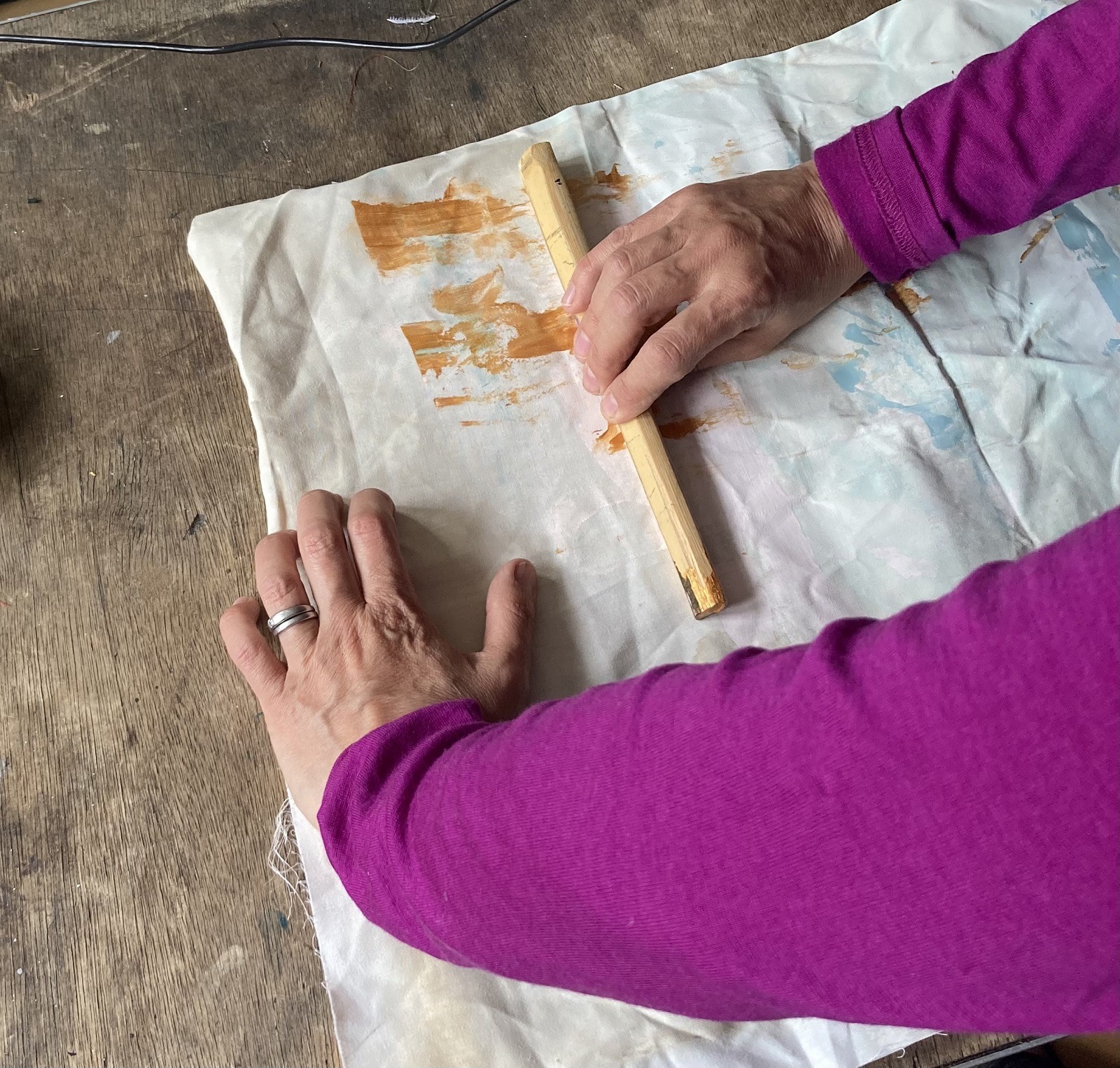
I drew and photographed the hospital and gardens, and I manipulated some of the imagery in Photoshop.
I then heat transferred the imagery onto the painted surfaces before adding stitch. I tend to use this as a base, and then I end up burning off the heat transfer with an iron after the stitch has been applied.
I then machine stitched the piece together. Finally, I hand stitched to bring the whole piece to life.
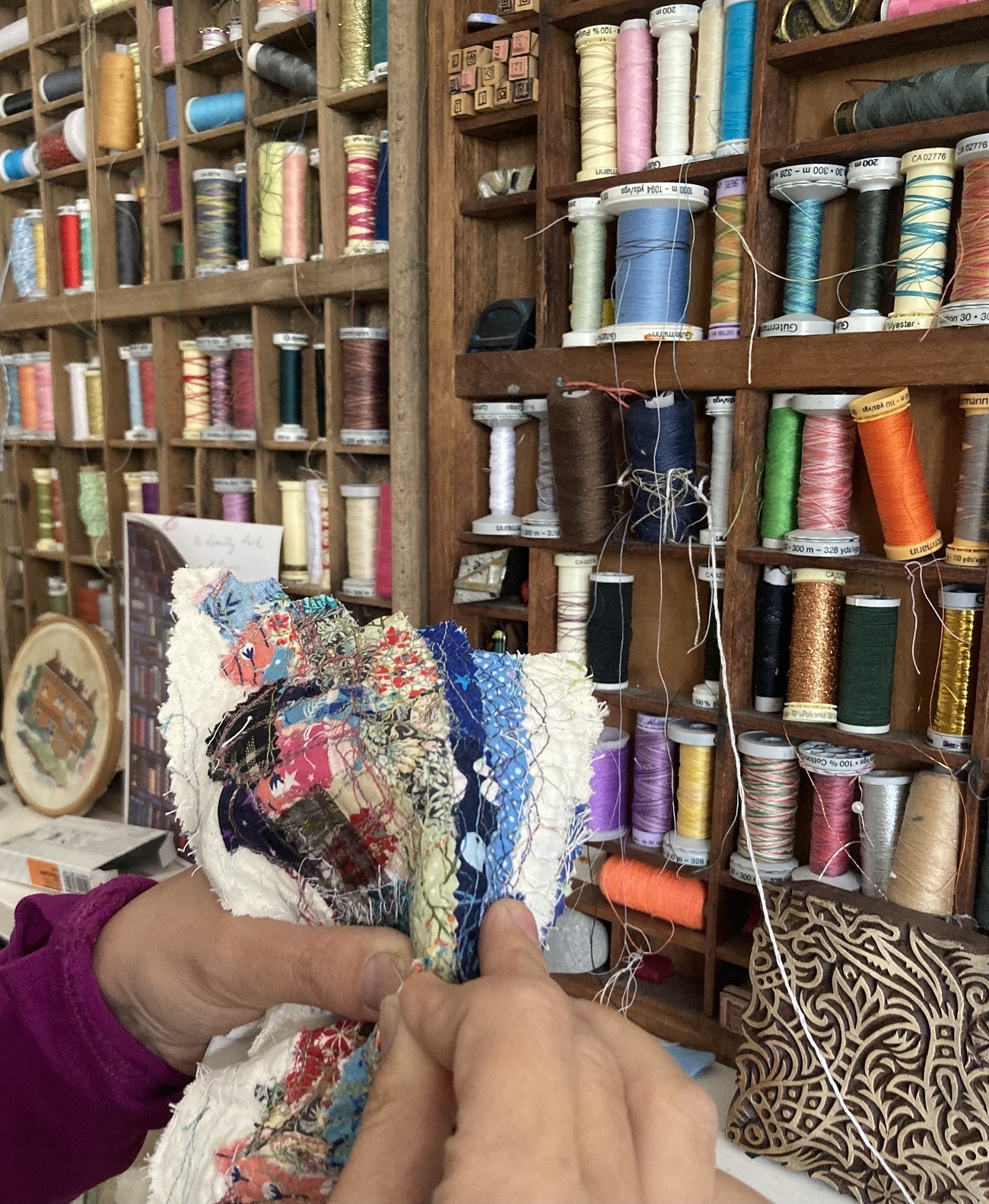
Hand stitching is the final icing on the cake on my pieces. I machine stitch during the day and hand stitch at night with my family watching TV. I find hand stitching very therapeutic and calming.
I don’t use complicated stitches often. Usually running stitch, back stitch and a few French knots.
I also stitch layers of discarded thread and some applique into my work. Nothing is spared. I hate waste and store jars of thread of different colours in my studio ready to be used. If I want my compositions to be especially expressive, I sweep the floor of my studio and use the mix of discarded threads as a base for my work.
I particularly like using variegated thread, as the randomness of the mark is what adds depth and intrigue to my work.
Hand stitch is like drawing marks and can sometimes be more clumsy and organic looking than machine stitch. I also sometimes highlight particularly dark areas of my work with hand stitch.
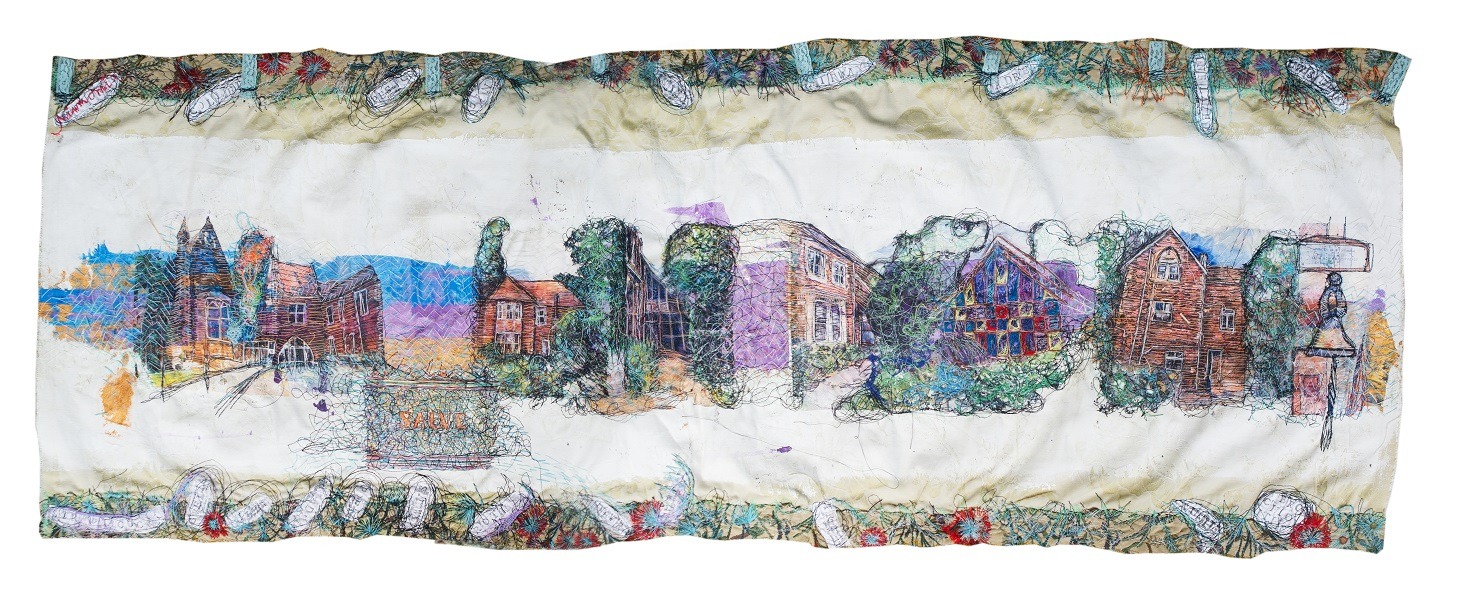
Architecture is traditionally a male medium and stitching is traditionally seen as women’s work. So, I created these painted/printed architectural spaces that are then softened by stitch and made to look more earthy and human.
I once had aspirations to become an architect, but maths has always been my biggest challenge, so I was put off pursuing that occupation. By recreating stitched architecture, I get to re-imagine buildings in my own style – so maybe that’s a happy compromise.
I would love the opportunity to work for an architect or interior designer and create pieces that enhance the internal or external spaces of a building.
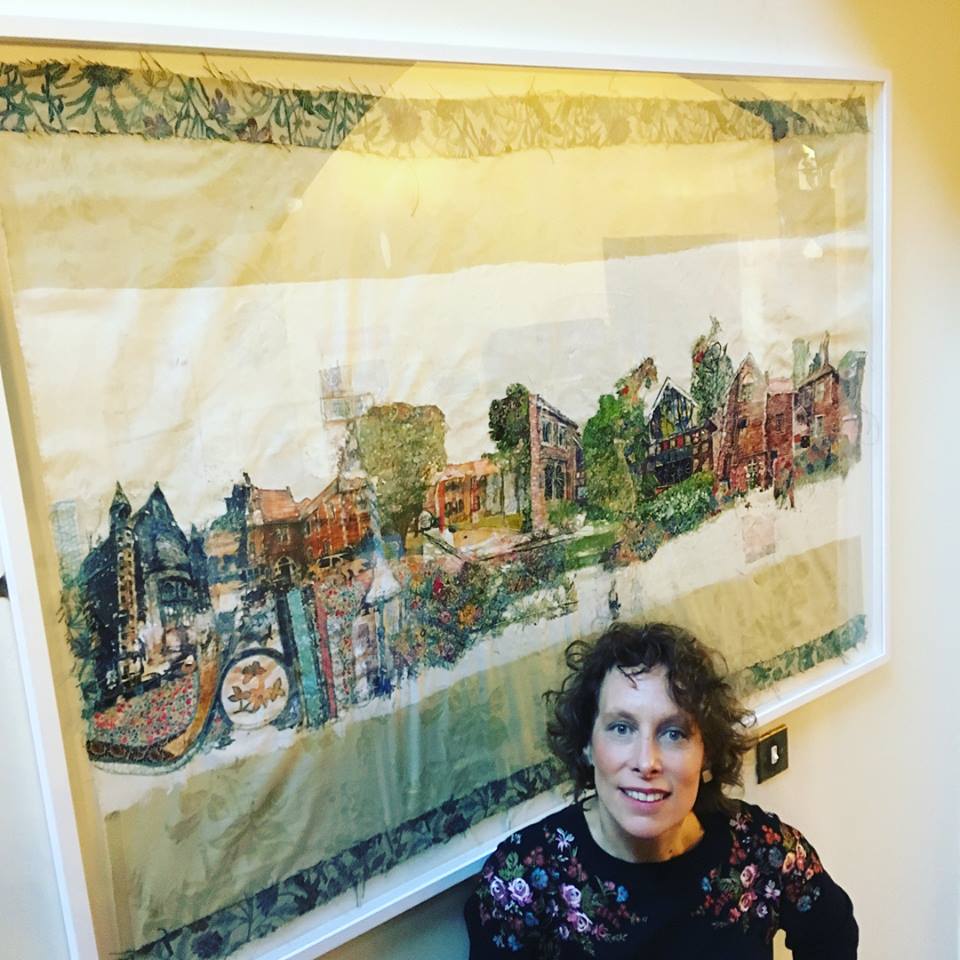
What journey has the piece been on since its creation?
The piece was a finalist for the National Contemporary Embroidery of the Year Award in 2018 and was showcased at the Knitting and Stitching Show in Kensington Olympia. It has also been shown on National Broadcast TV.
In 2020, it was featured in a film showcasing British Creativity for The Royal Mint Britannia coin.
It was exhibited at an exhibition of my work titled ‘get well soon’ which documented my recovery from pneumonia at Makers Guild in Wales.
It is now on display at the bottom of the main staircase at Rookwood Hospital in Cardiff.
Find out more about Haf and her work here: hafanhaf.com/ and on Instagram
Haf speaks about the power of textile art to help with personal healing. Have you found this to be true for yourself? Let us know below.
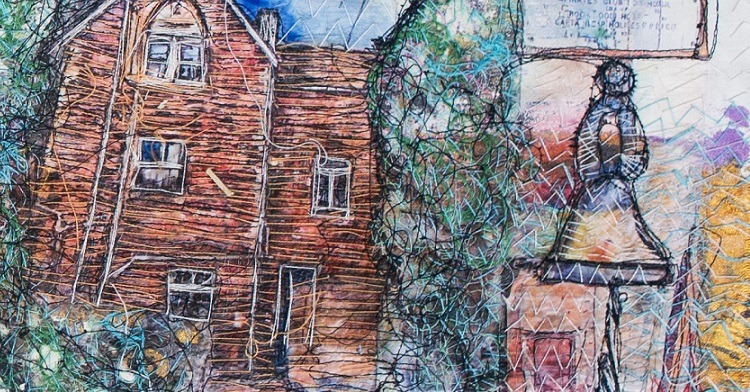

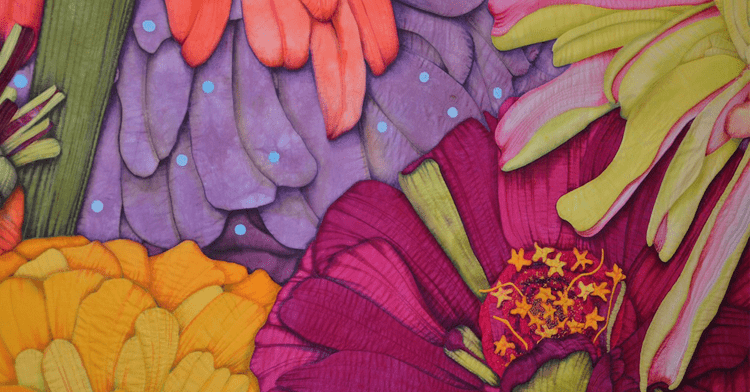
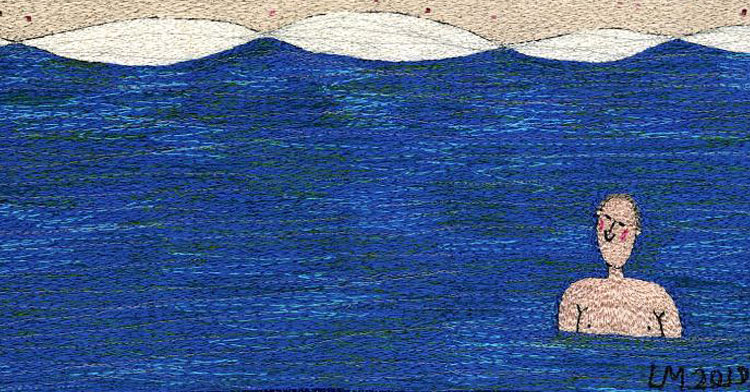
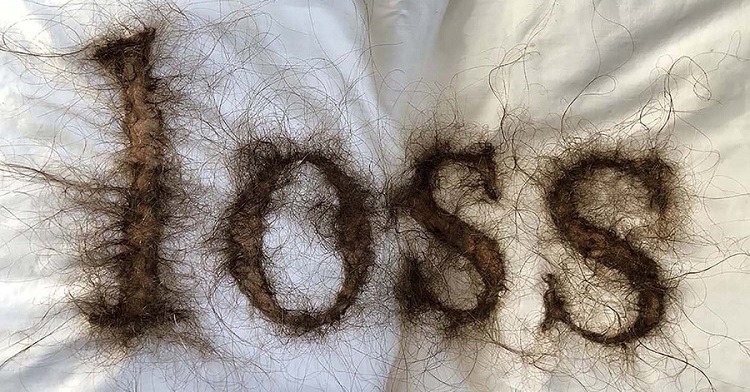
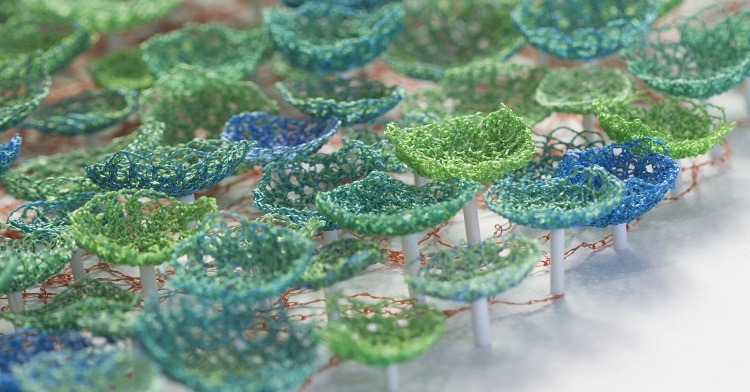
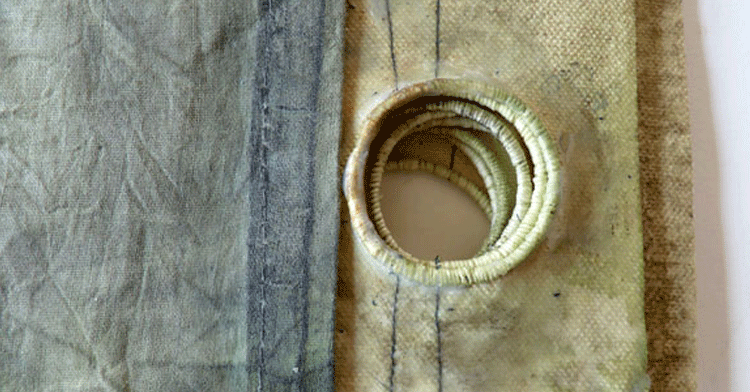
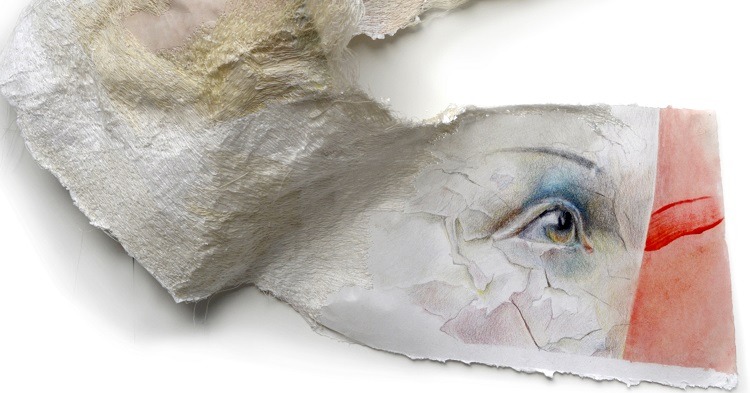
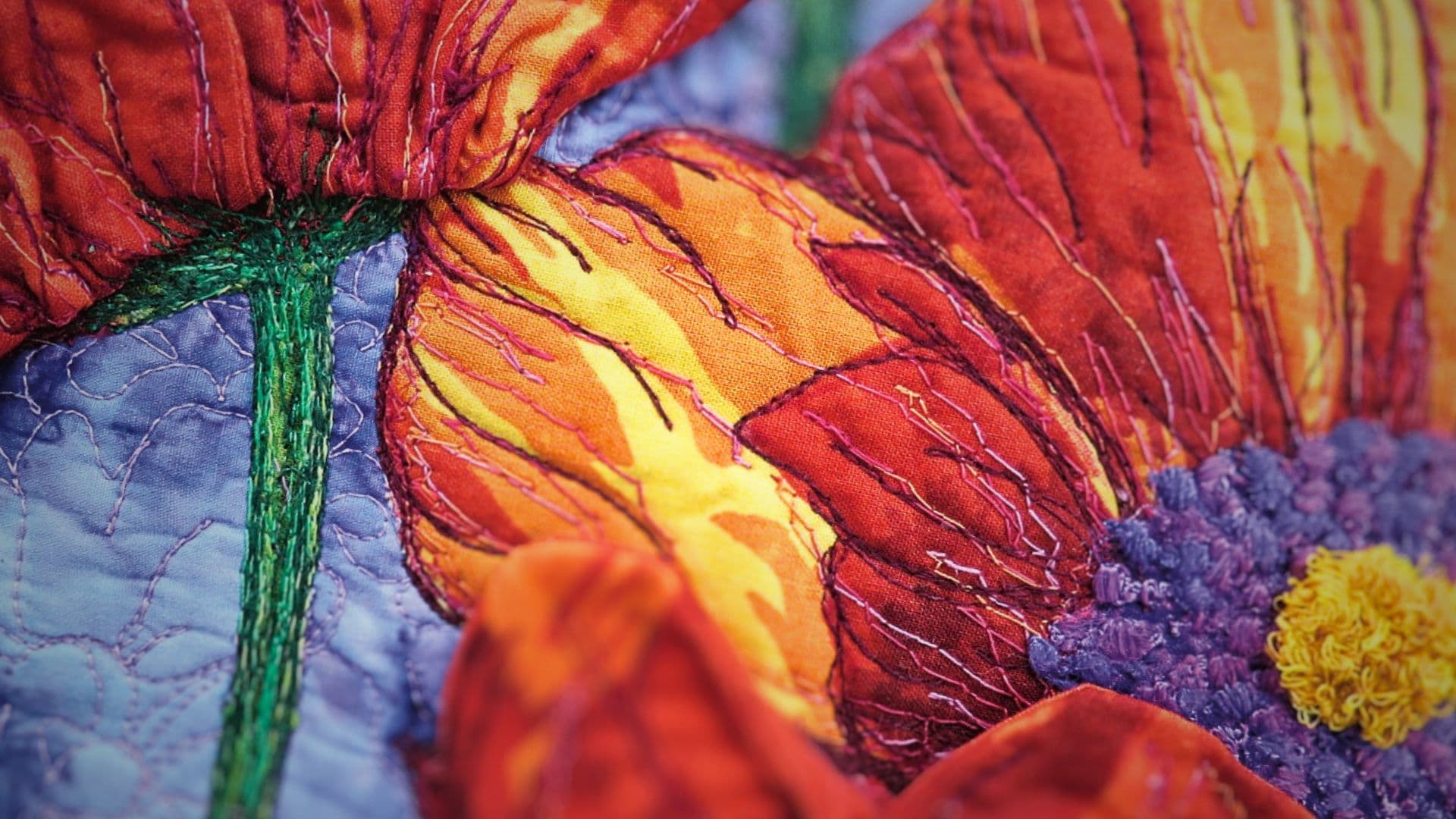
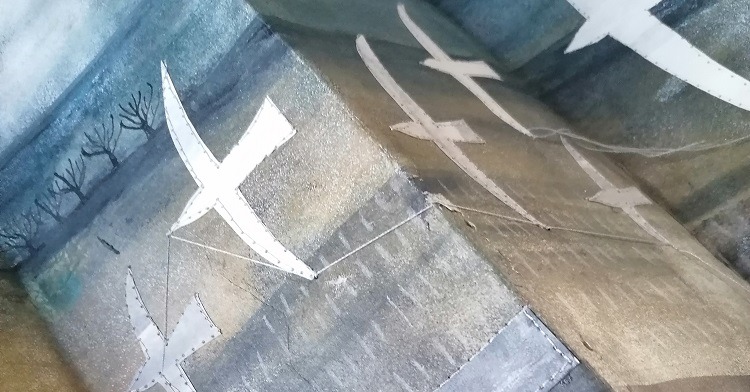
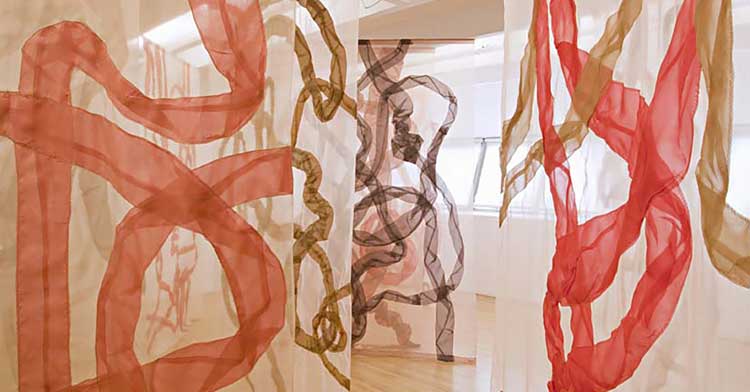
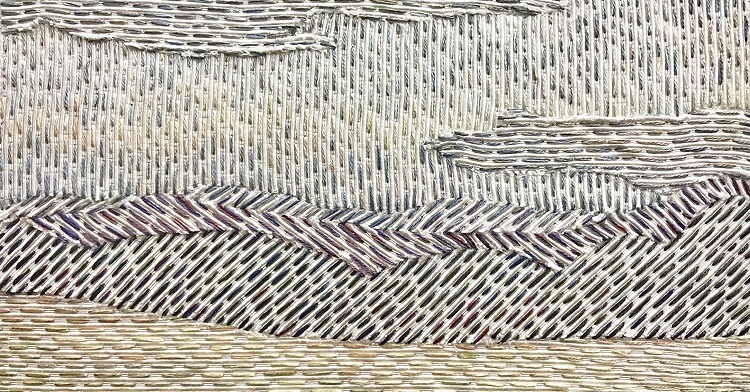
7 comments
Kate
What a lovely process to engage in, Haf you s great m to have a natural lack of self limiting boundaries in terms of finding your own approach (or you’ve spent years working on this and now it seems like they never existed in the first place ).
I spent a significant amount of time in Ronald MacDonald House in Sydney with my youngest son, one day I asked if they happened to have a sewing machine (no one had had it out for years) but they did ❤️. It gave me the break away from my everyday in the oncology clinic and much needed headspace as I sewed simple roomy cotton shorts for him to crawl about in, and it bought the residents of the house together to watch, ask questions, show intrigue and perhaps be a bit inspired to start sewing themselves – ‘Do you think I could do it?’ was an oft asked question. It gave everyone something else to think about in a time of great stress
I think the act of sewing creates community- even if people don’t sew themselves as such ❤️
Mari Stephens
Diolch Haf. Mae dy waith mor ysbrydoledig ac yn codi fy nghalon wrth edrych arno. Gwŷch.
Pob lwc yn y dyfodol.
Fiona Sperryn
The word ‘salve’ takes me back to Latin at school. We used it as the greeting at the start and finish of classes, pronouncing it in two syllables ‘sal-vay’. Good day and adieu. I wonder who designed the mosaic.
The artwork looks a fabulous piece for textured, coloured work and I wish I could see it in real life. I love to see the great drawing and process. I hope you are fully recovered now.
Janice Jamieson
A beautiful piece of art, and an amazing story behind it. I can completely understand working through illness. I have had fibromyalgia for 30 years, and sewing and other handcraftshave been extremely important to me. Thank you for this wonderful story and introduction to a fabulous artist.
WENDY EARLY
Another wonderful article from Haf.
She is so generous with her processes and I am always inspired by her workshops.
Looking forward to the forth-coming workshop, thanks!
Lindy Gibbon
Thank you for this fabulous article (well, for ALL the fabulous articles you send me each week). I loved reading about Haf’s work for Rockwood/Salve and found it very inspiring and beautiful.
I think many of us have found a healing through work with textiles and stitch and paint. In 2011 I succumbed to flu (in fairness, I had been pushing myself for some time so no surprise really) as a result of which I became very ill indeed – essentially long COVID but we didn’t know that then – I developed fibromyalgia and had to stop work. I was too physically unwell to do much at all, experiencing a great deal of pain and fatigue. My mental health suffered for what I felt was a loss of identity having worked in a job I loved that brought me a deal of recognition and kudos not to mention an independance.
My friend, Julia, suggested I started to learn to sew, I bought a very cheap machine and with some trepidation began making a quilt. 10 years on and I am a different person. I still get bad flare ups from the fibro but I am cheerful, have purpose again and have developed enormously in my creative journey and bless the day Julia encouraged me to stitch. Right now I am doing an online City & Guilds course with the wonderful Gillian Cooper and learning so much and have started making sensory books and am beginning to teach myself hand stitching.
Haf Weighton
Thank you for your comment on the article and for sharing your experience.